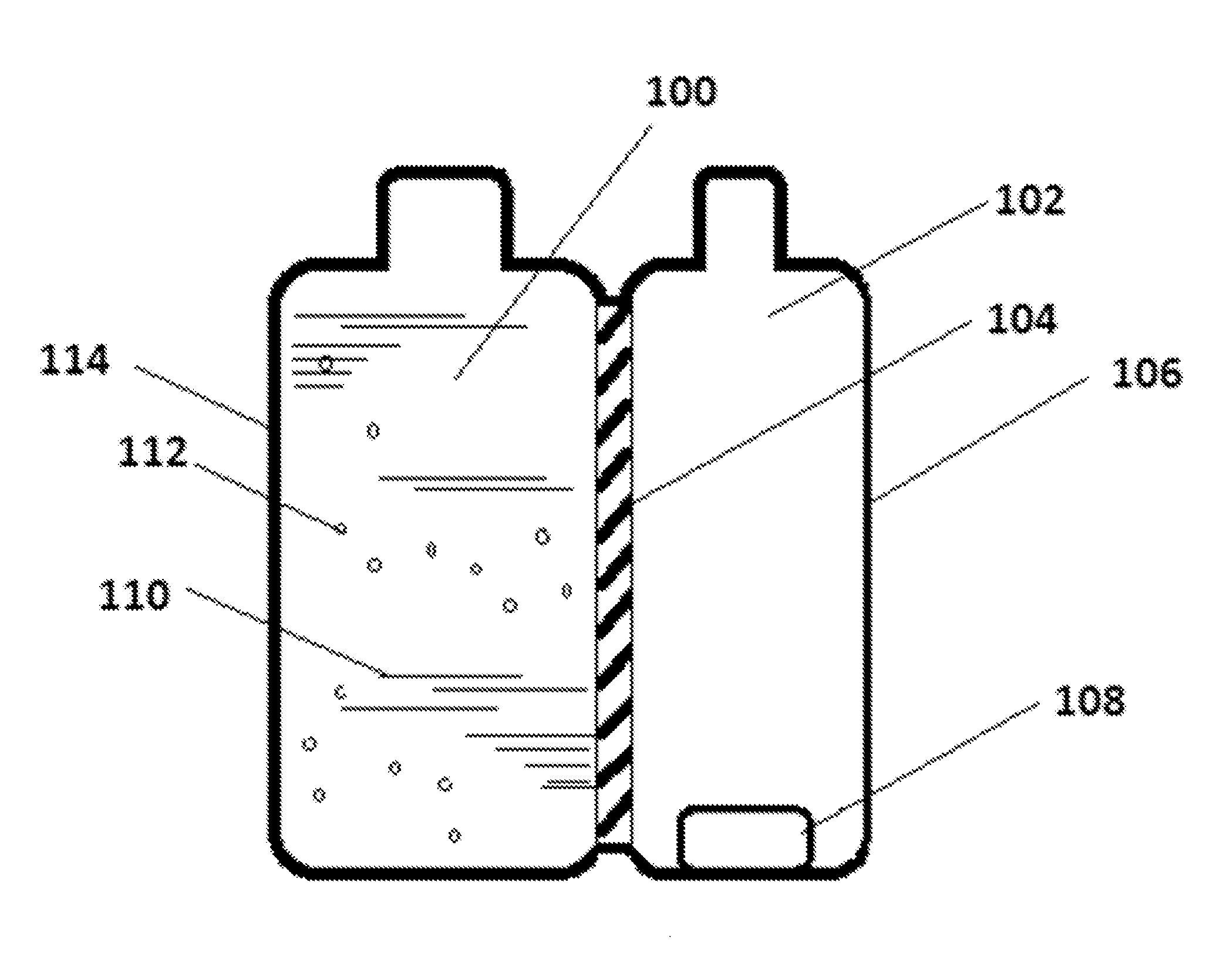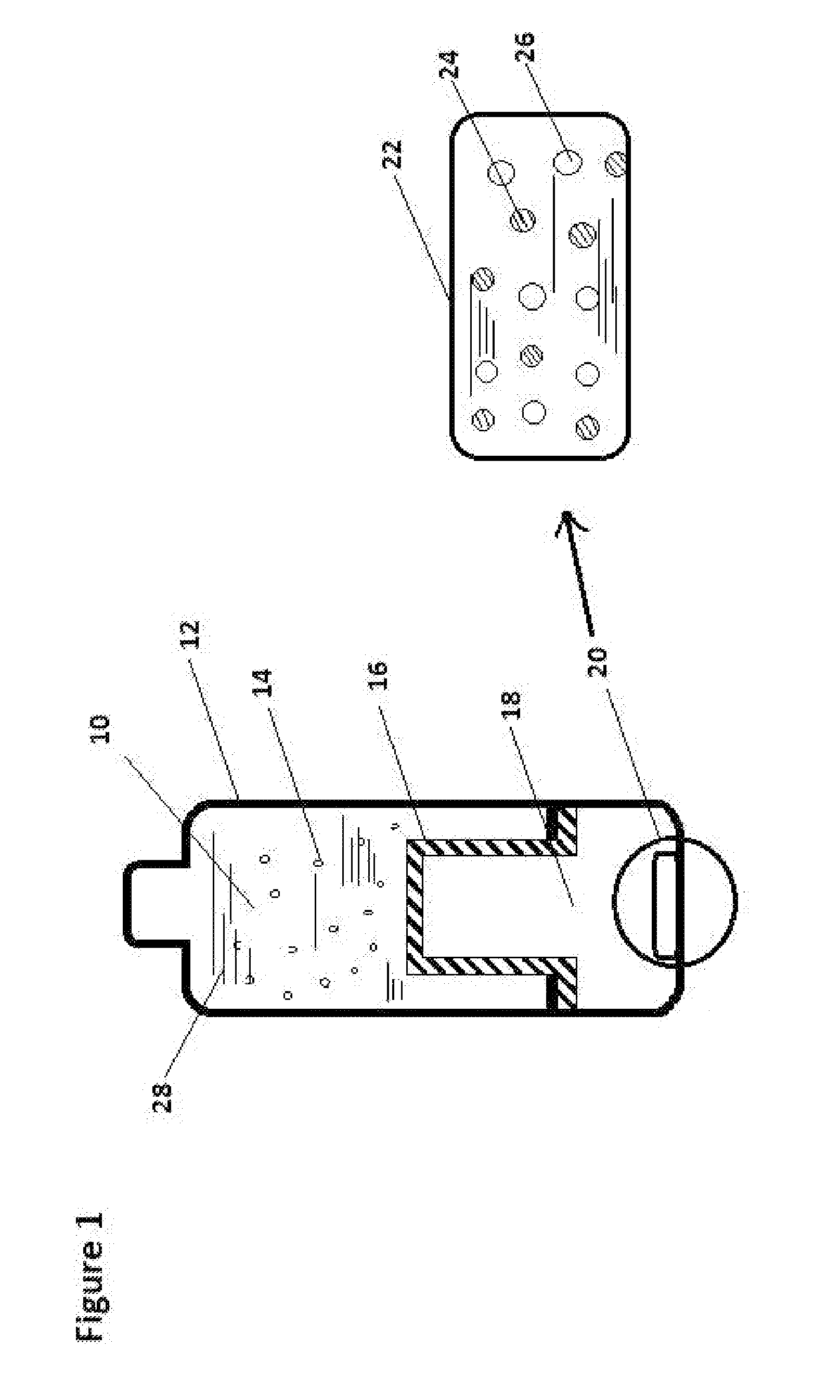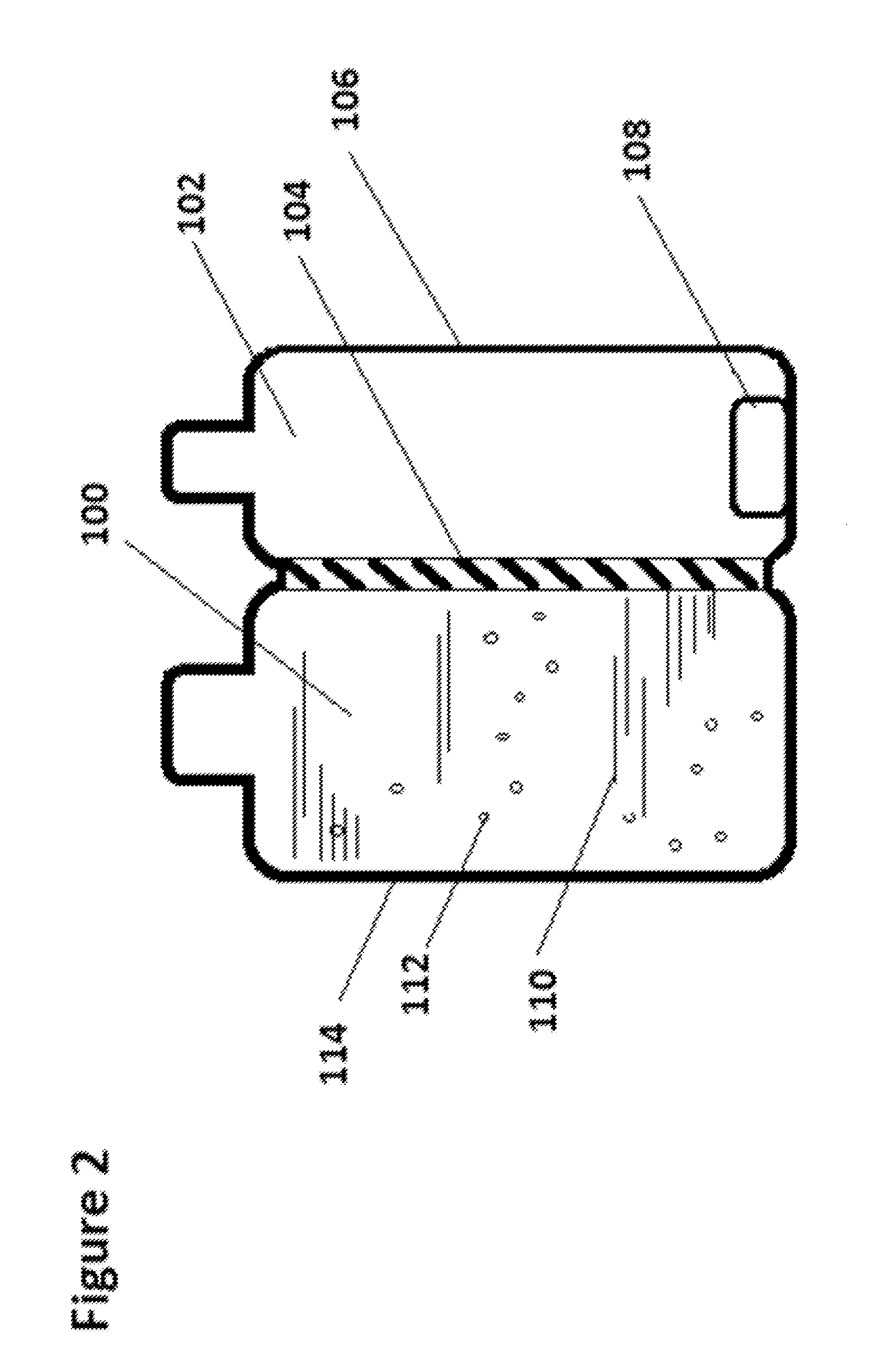Method and Apparatus to Produce Hydrogen-Rich Materials
a technology of hydrogen-rich materials and methods, applied in the direction of machines/engines, rigid containers, packaging, etc., can solve the problems of slow hydrogen gas generation speed between magnesium and water, slow hydrogen addition speed, and chronic diarrhea, so as to increase the hydrogen concentration, prevent the effect of gas pressure differences, and improve the hydrogen permeability
- Summary
- Abstract
- Description
- Claims
- Application Information
AI Technical Summary
Benefits of technology
Problems solved by technology
Method used
Image
Examples
experiment 1
Experiment on Adding Hydrogen into Drinking Water
[0066]Once the gas producing chamber is securely closed, fill the water storage compartment 10 with 400 ml of filtered drinking water 28. Many small air bubbles start to appear immediately all over the surface of connecting wall 16 of the gas producing chamber 18. Oxidation and reduction potential (ORP) value is measured to estimate the level of the dissolved hydrogen gas into the water. In one hour, the ORP value is dropped to below −250. Total dissolved salt (TDS) is measured to evaluate whether there is magnesium or other ion leakage into the drinking water. The TDS value is unchanged, for a particular example, the TDS value is maintained at 108 ppm during 24 hours of testing. As a comparison, the TDS level inside the gas producing chamber 18 typically reached to the level of 1200 ppm. The pH value of the drinking water 28 is also measured. There is slightly pH value increase in the range of 0.2-0.4 point, which is associated with ...
experiment 2
Experiment on Adding Hydrogen into Hot Tea
[0068]Once the gas producing chamber 18 is securely closed, fill the water storage compartment 10 with 400 ml of freshly brewed tea (Lipton green tea) 28 with a temperature of 97 degree Celsius. Many small air bubbles start to appear immediately all over the surface of the connecting wall 16 of the gas producing chamber 18. ORP value is measured to estimate the level of the dissolved hydrogen gas into the water. In half an hour, the ORP value of the tea is dropped to below −250. TDS is measured to evaluate whether there is magnesium or other ion leakage into the tea 28. The TDS value of the tea is unchanged, for a particular example, the TDS value is maintained at 173 ppm during 24 hours of testing. As a control, the ORP value of the un-treated tea (not adding hydrogen) is maintained at around +28 for the first two hours, and then the ORP values gradually increase to +49 in 24 hours. As a comparison, “magnesium stick” method cannot be used f...
experiment 3
Experiment on Adding Hydrogen into Hot Coffee
[0069]Once the hydrogen gas producing chamber 18 is securely closed, fill the water storage compartment 10 with 400 ml of freshly brewed coffee (Tongkat Ali) 28 with a temperature of 100 degree Celsius. ORP value is measured to estimate the level of the dissolved hydrogen gas into the water. In half an hour, the ORP value of the coffee is dropped to below −250. TDS is measured to evaluate whether there is magnesium or other ion leakage into the coffee 28. The TDS value of the coffee is unchanged, for a particular example, the TDS value is maintained at 603 ppm during 24 hours of testing. As a control, the ORP value of the un-treated coffee (not adding hydrogen) is maintained at around +35 for the first two hours, and then the ORP values gradually increase to +72 in 24 hours. As a comparison, “magnesium stick” method cannot be used for hot coffee.
PUM
| Property | Measurement | Unit |
|---|---|---|
| Temperature | aaaaa | aaaaa |
| Concentration | aaaaa | aaaaa |
| Permeability | aaaaa | aaaaa |
Abstract
Description
Claims
Application Information
 Login to View More
Login to View More - R&D
- Intellectual Property
- Life Sciences
- Materials
- Tech Scout
- Unparalleled Data Quality
- Higher Quality Content
- 60% Fewer Hallucinations
Browse by: Latest US Patents, China's latest patents, Technical Efficacy Thesaurus, Application Domain, Technology Topic, Popular Technical Reports.
© 2025 PatSnap. All rights reserved.Legal|Privacy policy|Modern Slavery Act Transparency Statement|Sitemap|About US| Contact US: help@patsnap.com



